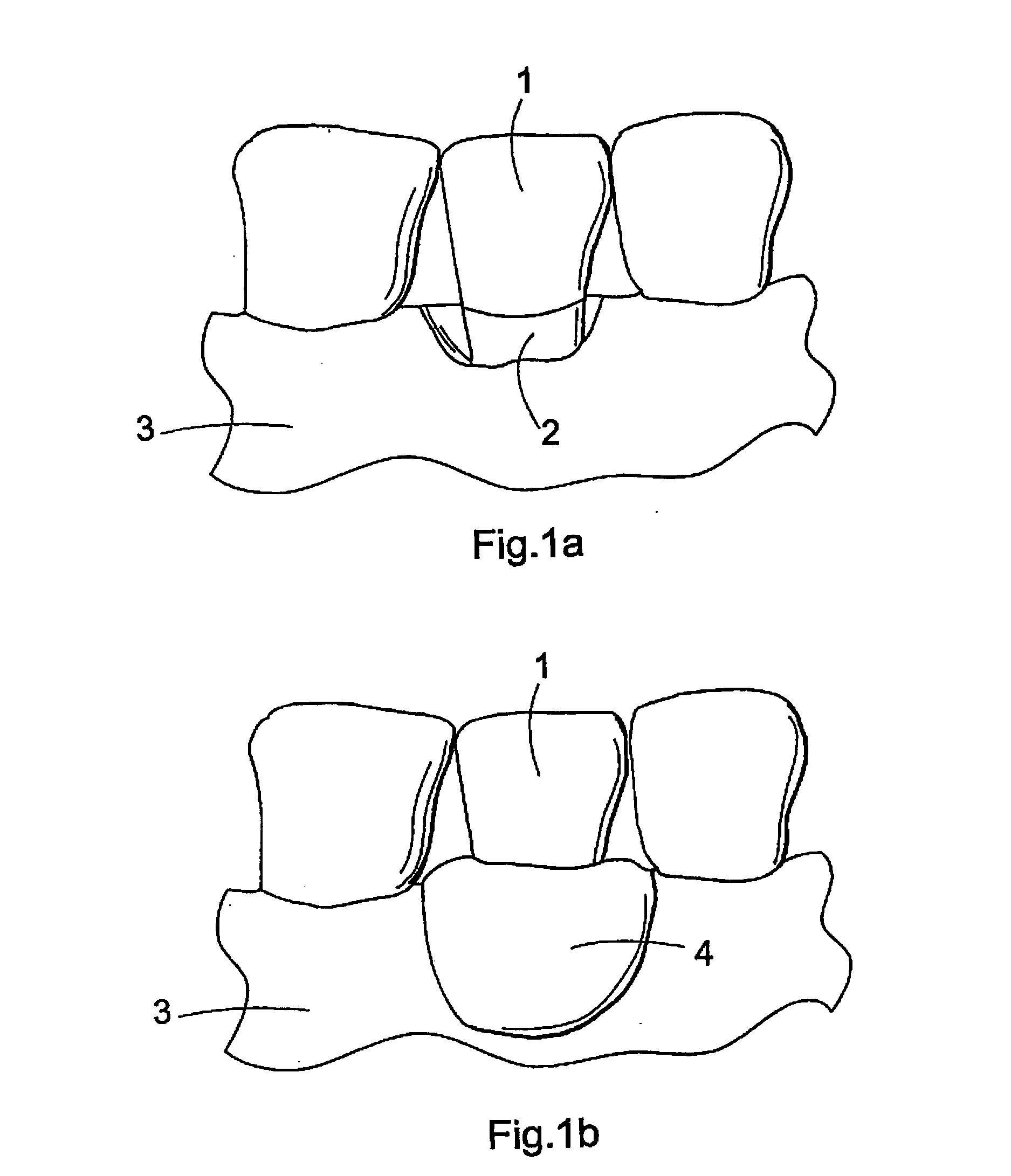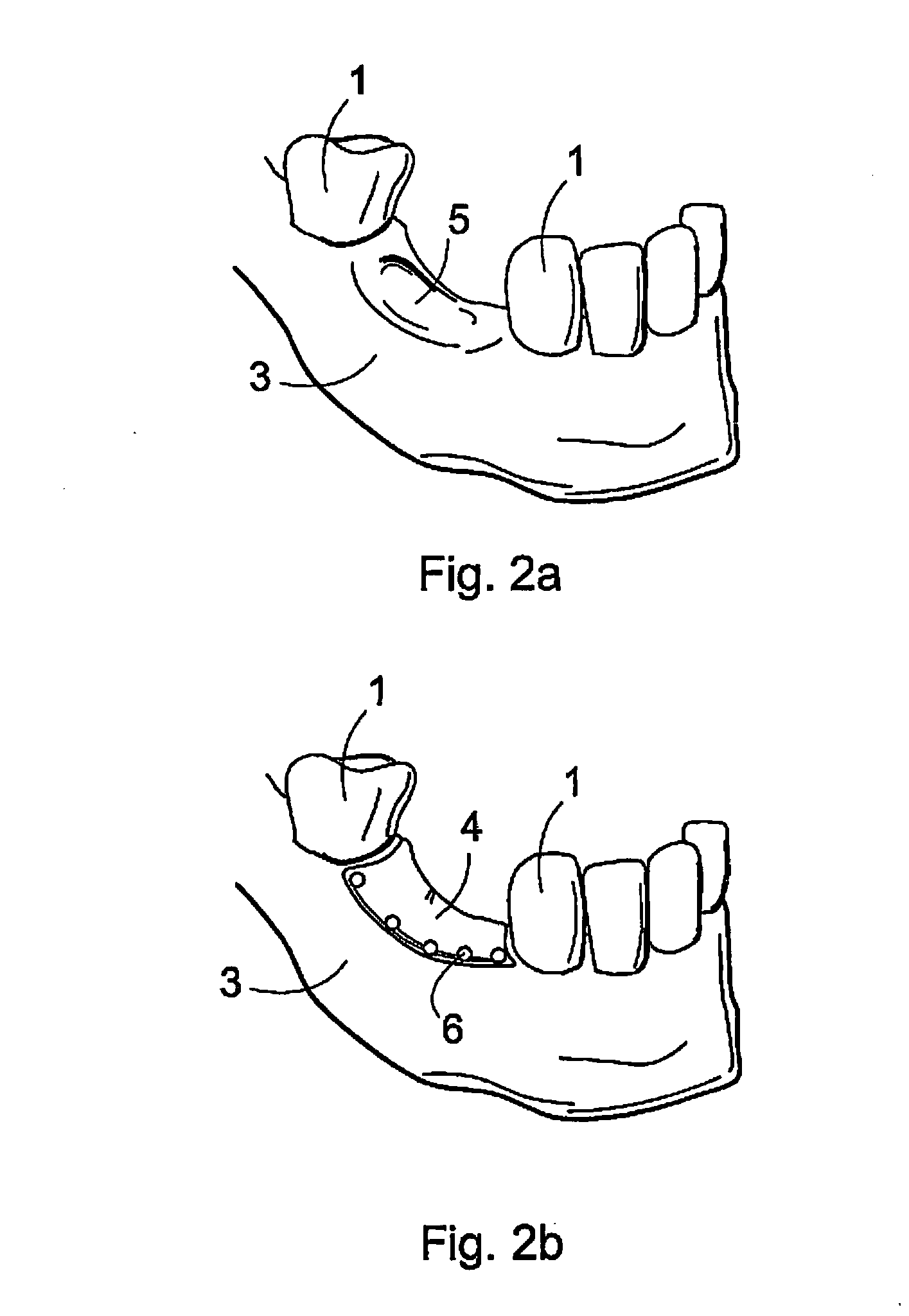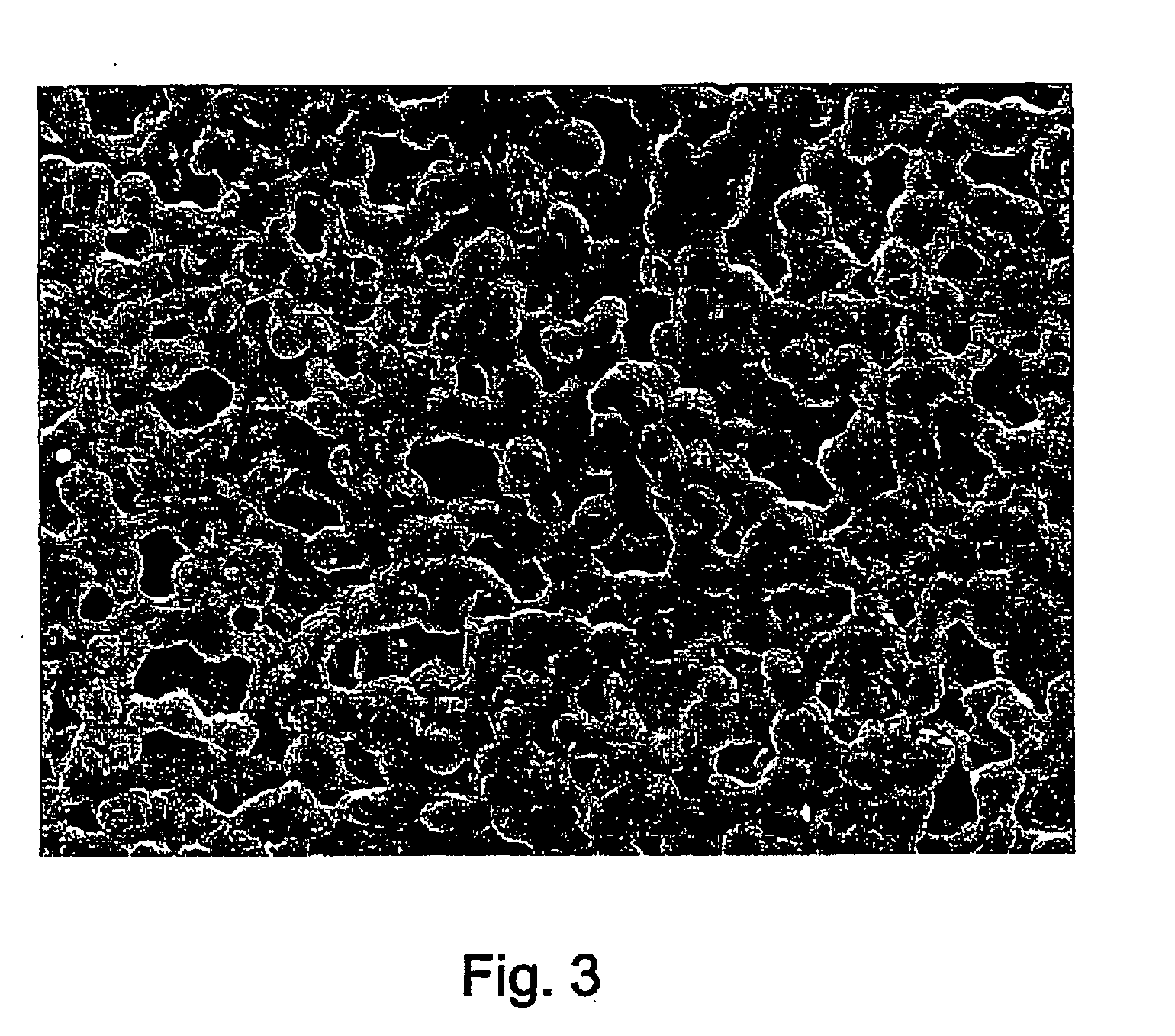Biodegradable implant and method for manufacturing one
- Summary
- Abstract
- Description
- Claims
- Application Information
AI Technical Summary
Benefits of technology
Problems solved by technology
Method used
Image
Examples
example 1
[0047] A blank was made by extrusion of trimethylencarbonate / polylactide copolymer TMC / PLA (10:90), and the blank was further worked by compression molding into a 0.2-mm thick membrane. The highest used compression pressure was 100 bar and the maximum temperature was 180° C.
[0048] Strips of 80 mm in length and 10 mm in width were cut from the membrane for a tensile test. Four sets of strips, A, B, C and D, were randomly selected, each set having five strips.
[0049] The samples of sets A and B were immersed in an NMP solution and kept there for 30 seconds. After this, the samples were lifted from the solution and placed on top of a metal net for 30 minutes to ensure the diffusion of NMP to the polymer. The method describes one embodiment of the invention, in which the implant is treated with NMP just before it is inserted in place in the patient.
[0050] The samples were tested with a generally known Instron material testing device. The testing was done according to the SFS-ISO 1184 ...
example 2
[0054] In another embodiment of the method of the invention, pyrrolidone plasticizer is already added to the rest of the implant material when the implant is being made. Thus, trimethylenecarbonate / polylactide copolymer TMC / PLA (10:90) in melt form was mixed in an extruder with NMP in such a manner that in the resulting material, the NMP proportion was 30 percent by weight. A 0.3-mm thick membrane was extruded from the material. Tensile test pieces were made from the membrane and the testing was conducted according to the SFS-ISO 1184 standard.
[0055] The following test values were obtained for the material: tensile modulus 34.6 MPa, yield strength 3.2 MPa and tensile strength at break 13.6 MPa. When comparing the tensile modulus and yield modulus with the corresponding values obtained in example 1 and presented in table 1, it can be seen that they are in the same range. Thus, the time when NMP and the matrix polymer are mixed bears no essential significance to the properties of use...
example 3
[0056] As done in example 1, a 0.2-thick membrane was made of poly(L-lactide-co-trimethylencarbonate-co-polyglycolide) copolymer PLLA / PGA / TMC (80:10:10). 20 strips of 5×30 mm were cut from the membrane and further treated by immersing them in an NMP solution for 30 seconds. The strips were allowed to homogenize for NMP to diffuse for 20 minutes. The strips were divided into a first and a second set. The 10 strips of the first set were tested at indoor temperature with a pulling machine at a pulling rate of 20 mm / min with the pulling distance at 10 mm initially. The 10 strips of the second set were immersed in a phosphate buffer solution and kept there at a temperature of 37° C. for 24 hours before testing in a water bath of 37° C.
[0057] Strips of 5×30 mm and having a thickness of 0.3 mm were cut from three GTR membranes on the market and manufactured by W.L. Gore & Associates, Inc. for a tensile test. Two sets of four tensile test samples were made, and the samples of the first set...
PUM
| Property | Measurement | Unit |
|---|---|---|
| Temperature | aaaaa | aaaaa |
| Temperature | aaaaa | aaaaa |
| Temperature | aaaaa | aaaaa |
Abstract
Description
Claims
Application Information
 Login to View More
Login to View More - R&D
- Intellectual Property
- Life Sciences
- Materials
- Tech Scout
- Unparalleled Data Quality
- Higher Quality Content
- 60% Fewer Hallucinations
Browse by: Latest US Patents, China's latest patents, Technical Efficacy Thesaurus, Application Domain, Technology Topic, Popular Technical Reports.
© 2025 PatSnap. All rights reserved.Legal|Privacy policy|Modern Slavery Act Transparency Statement|Sitemap|About US| Contact US: help@patsnap.com



